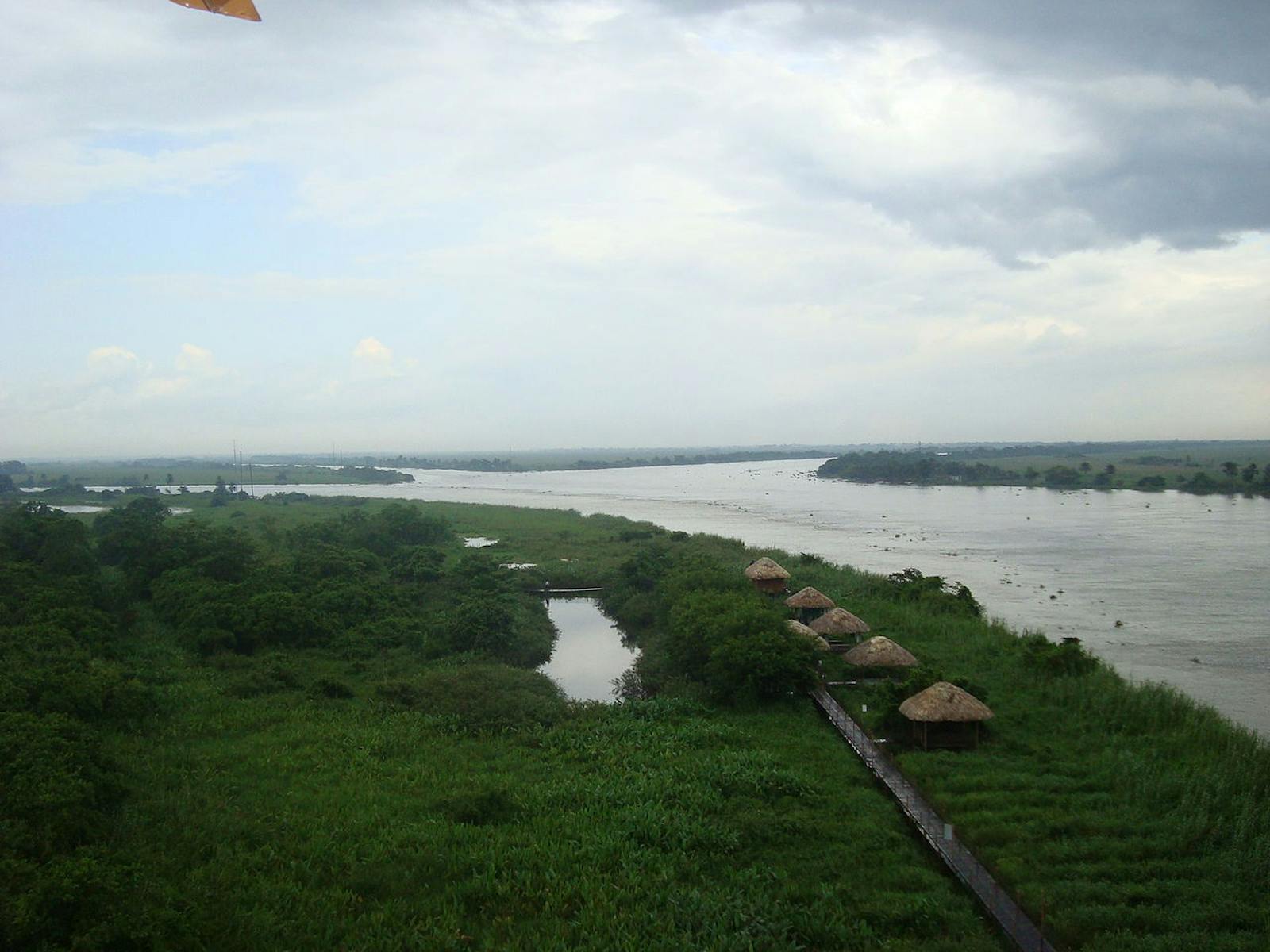Pantanos De Centla
The ecoregion’s land area is provided in units of 1,000 hectares. The protection goal is the Global Safety Net (GSN1) area for the given ecoregion. The protection level indicates the percentage of the GSN goal that is currently protected on a scale of 0-10.
Bioregion: Yucatan & Veracruz Mixed Forests (NT27)
Realm: Central America
Ecoregion Size (1000 ha):
1,725
Ecoregion ID:
489
Conservation Target:
44%
Protection Level:
8
States: Mexico
The Pantanos de Centla ecoregion is one of the few areas left with populations of the critically endangered Central American river turtle. They primarily occur in larger rivers and lakes but will enter seasonally flooded forests like those of the Pantanos de Centla. They will only leave the water to lay eggs, usually no more than 3 m from the shoreline. These turtles are unique evolutionarily, and their closest known relatives are known only from fossils. They prefer to eat plants, especially fig fruits that fall into the water, but they will also venture to find leaves and other available vegetation. The chief threat this rapidly disappearing reptile face since the 1970s is illegal hunting for their meat.
.jpg)
The flagship species of the Pantanos De Centla ecoregion is the Central American river turtle. Image credit: Pedro Nahuat, Creative Commons
The Pantanos de Centla Moist Forests are in the state of Tabasco, Mexico. The deltas of the Usumacinta and Grijalva Rivers are of great importance to vegetative communities as well as the moist forests. Soils are deep, very acidic, and rich in organic matter, making them very productive. The ecoregion has one of the warmest climates in Mexico and is hot and humid year round with abundant rains in summer. The temperature here averages 26.1°C and the annual rainfall is over 2,000 mm.
The region is situated on a vast plateau with occasional flood plain formations. Key vegetation species in the forest community are distributed in two canopy strata: the upper canopy, which is represented by mulato, kantemú, and kapok trees; and the middle canopy, which is composed of guano Redondo, jahuacte, and Erithryna spp. Fruit trees like chicozapote also flourish among tropical species. Some valuable timber species occur as well, such as cedro and mahogany. Various orchids, bromeliads, and ferns are also common in the moist forest.
The Pantanos de Centla ecoregion serves as a biological corridor between Veracruz and southern Tabasco. This corridor is of enormous ecological importance and includes a variety of ecosystem types, from flooded moist forests to temperate and cloud forests. The Pantanos de Centla form part of the “Arc Area” recognized for high species endemism and biodiversity. Specifically, this ecoregion’s species richness is high, although endemism is relatively low.
The species found throughout the ecoregion maintain close association with the aquatic communities found in inundated mangrove and marsh habitats. The ecoregion contains nearly 360 species of birds, 85 reptiles, 26 amphibians, and over 120 mammals. Iconic species include American crocodile, ocelot, and colorful shorebirds such as scarlet ibis and roseate spoonbill.
Between 1940 and 1990, it is estimated that the forested area was reduced from 80% to just about 8% of the total area. Most of the remaining area is well preserved but is under increasing threat of fragmentation and disturbance by humans. Within this ecoregion, several sites have been identified as Important Bird Areas. The Biosphere Reserve of Pantanos de Cental establish in 1992 is significant for the area and introducing ideas of sustainable use.
The moist forests have been gradually eliminated for agriculture and timber. The highly productive soils are sought after by local farmers who clear away the native vegetation. Deforestation for cattle grazing and industrial pollution are also major threats to this habitat. Together, these threats account for the high number of species in danger of extinction in the state of Tabasco. The area contains 19 species of threatened animals, as well as 5 that are considered rare. Long-term threats to the region include overexploitation of resources and pollution of the waterways from industrial and human use.
The priority conservation actions for the next decade will be to: 1) raise local awareness of biodiversity conservation and its benefits; 2) encourage farmers to integrate sustainable measures in their practices; and 3) increase the number, size, and connectivity of protected areas.
Citations
1. Valero, A. Schipper, J. Allnutt, T. 2019 Pantanos de Cental https://www.worldwildlife.org/ecoregions/nt0148 Accessed June 23, 2019.
2. Challenger, A. 1998. Utilización y conservación de los ecosistemas terrestres de México. Pasado, presente y futuro. Conabio, IBUNAM y Agrupación Sierra Madre, México.
3. López-Hernández, E.S. and C. Pérez-López. 1993. Guia para la Interpretación de la Naturaleza en los Pantanos de Centla, Tabasco. Centro de Investigacion de Ciencias Biológicas, Unidad Sierra. Tabasco, México. 106 pp.



